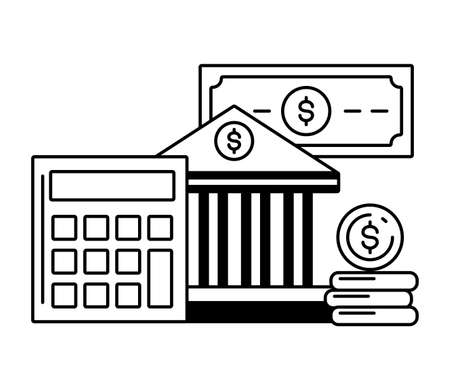Understanding Mortgage Documentation Requirements
When applying for a mortgage in the United States, understanding why lenders require specific documents is crucial. U.S. mortgage lenders need detailed and accurate paperwork to assess your financial stability, verify your identity, and ensure you have the ability to repay the loan. This process protects both the lender and the borrower by minimizing risk and confirming that all legal and regulatory requirements are met. Accurate documentation—such as proof of income, employment verification, tax returns, and bank statements—provides transparency and helps prevent fraud. Gathering these documents early streamlines the application process and increases your chances of getting approved without unnecessary delays. In short, being organized and thorough with your paperwork isn’t just about meeting lender demands—it’s a key part of successfully buying a home in today’s American real estate market.
Preparing Personal Identification and Verification
When applying for a mortgage in the United States, lenders are required by federal law to verify your identity and legal eligibility to reside and work in the country. This step is critical for both security reasons and to ensure compliance with lending regulations. Being prepared with the correct personal identification documents will help you avoid delays and move your application forward efficiently.
Essential Documents for Identity Verification
Most American lenders will require a combination of government-issued identification, proof of Social Security number, and verification of legal residency or citizenship status. The following table outlines the most commonly requested items:
| Document Type | Examples | Purpose |
|---|---|---|
| Government-Issued Photo ID | Driver’s License, State ID Card, U.S. Passport | To confirm your identity visually and legally |
| Social Security Number Verification | Social Security Card, SSA-1099 Form, W-2 Form (showing full SSN) | To verify your Social Security number for tax and credit purposes |
| Proof of Legal Residency or Citizenship | U.S. Birth Certificate, Certificate of Naturalization, Permanent Resident Card (Green Card), Work Visa (if applicable) | To confirm your eligibility to live and work in the U.S. |
Best Practices for Document Preparation
- Check Expiration Dates: Ensure that all forms of identification are current and not expired.
- Name Consistency: Names should match across all documents; discrepancies may cause processing delays.
- Provide Clear Copies: If submitting copies, make sure they are legible and complete—avoid cutting off information or images.
- Secure Sensitive Information: Handle these documents carefully, as they contain sensitive personal data.
Lender-Specific Requirements
Lenders may have specific preferences or additional requirements based on their internal policies or your immigration status. Always check with your loan officer early in the process to confirm exactly what is needed. Having all necessary identification and verification documents organized up front will streamline your mortgage application journey.

3. Assembling Proof of Income and Employment
One of the most critical steps in your mortgage application process is gathering accurate proof of income and employment. U.S. lenders require this documentation to verify your ability to repay the loan, so it’s essential to be thorough and organized. For most applicants with traditional employment, you’ll need to collect your most recent pay stubs—typically covering the last 30 days—to show your current earnings. In addition, lenders usually request your W-2 forms from the past two years to confirm your annual income history and job stability. If you receive bonuses or commissions, be sure those are clearly reflected as well.
Beyond pay stubs and W-2s, you should prepare copies of your federal tax returns for the previous two years. This is especially important if you have multiple sources of income or if any part of your compensation is variable. Tax returns help lenders get a comprehensive view of your financial situation, including deductions or other reported income streams.
If you’re self-employed, a freelancer, or a gig worker, expect more scrutiny and additional paperwork. Standard requirements include two years of complete personal and business tax returns, along with year-to-date profit-and-loss statements and balance sheets for your business. Bank statements showing consistent deposits can also support your case. Keep in mind that lenders want to see reliable income over time—not just one good year.
Having all these documents ready before you apply will streamline the process, reduce delays, and give lenders confidence in your application. Double-check that all paperwork is up-to-date, legible, and matches what you report on your application to avoid unnecessary questions or underwriting setbacks.
Gathering Asset and Bank Statements
When applying for a mortgage in the United States, lenders want to verify your financial stability and ability to make a down payment. This means you’ll need to gather comprehensive documentation for all your liquid assets. Here’s how to organize your checking, savings, retirement, and investment account statements efficiently for your mortgage application.
What Asset Statements Do You Need?
Lenders typically require statements from the following accounts:
| Account Type | Required Documents | Purpose |
|---|---|---|
| Checking Account | Last 2-3 months of statements | To verify current balance and spending habits |
| Savings Account | Last 2-3 months of statements | To show funds available for down payment and reserves |
| Retirement Accounts (401k, IRA) | Most recent quarterly statement | To demonstrate long-term financial stability |
| Investment Accounts (stocks, bonds, mutual funds) | Most recent monthly or quarterly statement | To reveal additional assets that could be liquidated if necessary |
How to Organize Your Financial Documents
- Download Official PDFs: Always use official PDF statements directly from your financial institutions’ online portals. Avoid screenshots or partial documents.
- Name Files Clearly: Use a consistent naming format such as “BankName_Checking_March2024.pdf” so lenders can easily identify each document.
- Avoid Redactions: Do not black out any information unless instructed by your loan officer; complete statements are required for verification.
- Include All Pages: Even if a page is blank, include it. Lenders may reject incomplete statements.
- Highlight Large Deposits: If there are large, non-regular deposits (such as gifts or transfers), be prepared to provide a written explanation and supporting documentation to prove the source.
Demonstrating Down Payment Sources
Lenders will scrutinize the origin of your down payment funds. Make sure the money is seasoned (in your account for at least 60 days) or have clear documentation for any recent transfers or gifts. If you’re receiving gift funds, ask your lender about their required gift letter template and supporting evidence.
Pro Tip: Keep Everything Digital and Backed Up
Create a dedicated digital folder for all your mortgage documents and regularly back it up to cloud storage. This ensures you can quickly resend any requested paperwork and keep your loan process moving forward without delays.
5. Documenting Debts and Financial Obligations
When preparing your mortgage application, it’s essential to provide clear documentation of all your current debts and financial obligations. Lenders need this information to assess your debt-to-income (DTI) ratio and determine your ability to manage additional monthly payments. Here’s how you can organize and present these documents effectively for the underwriting process:
List All Existing Loans
Start by compiling statements for any outstanding loans, including auto loans, student loans, and personal loans. Ensure each document clearly shows your current balance, required monthly payment, account number, and the name of the lender. Most lenders prefer recent statements—typically from the last 60 days.
Include Credit Card Details
Provide statements for all open credit card accounts, regardless of whether you carry a balance or pay in full each month. These should display your credit limit, balance due, minimum monthly payment, and account details. Highlight any cards with high balances or recent large purchases, as underwriters will scrutinize these closely.
Disclose Child Support and Alimony
If you are obligated to pay child support or alimony, gather court orders or legal agreements that outline the payment terms. Include proof of consistent payments by providing bank statements or canceled checks from at least the past six months. Transparency here is key; failing to disclose court-ordered obligations may delay or jeopardize your loan approval.
Tips for Organization
- Keep all documents in a dedicated folder labeled by category (loans, credit cards, child support/alimony).
- Ensure all copies are legible and show your name and account numbers.
- Prepare a summary sheet listing each debt with corresponding monthly payments to help the lender quickly verify your information.
Why This Matters
Lenders use this documentation to calculate your total monthly liabilities compared to your income. A lower DTI ratio increases your chances of getting approved for a mortgage and may even help you qualify for better rates. By proactively compiling accurate records of your debts and obligations, you’ll streamline the underwriting process and demonstrate financial responsibility.
Other Supporting Documents You Might Need
While most mortgage applications require standard documentation like proof of income and credit history, there are situations where lenders will ask for additional paperwork to get a complete picture of your financial background. Being prepared with these extra documents can help keep your application process running smoothly.
Rental History
If you’ve been renting rather than owning your home, especially for the last couple of years, lenders may request proof of your rental payments. This is often in the form of canceled checks, bank statements showing rent payments, or a letter from your landlord. Consistent, on-time payments show you’re responsible and can strengthen your application if you have limited credit history.
Divorce Decrees or Child Support Documentation
If you’re divorced or separated, lenders may need copies of your divorce decree and any child support or alimony agreements. These documents clarify any ongoing financial obligations or additional income sources. Full disclosure helps underwriters accurately assess your debt-to-income ratio and monthly cash flow.
Gift Letters
If part of your down payment is coming as a gift from a relative or close friend, you’ll need a formal gift letter. The lender wants to confirm that the money isn’t a loan that needs to be paid back, which could affect your ability to handle mortgage payments. The gift letter should specify the amount, relationship, and that repayment is not expected.
Other Unique Situations
Some borrowers may encounter requests for paperwork related to bankruptcy discharge papers, proof of legal name changes, evidence of large deposits, or documentation regarding non-traditional income sources like freelance work. Each situation is unique, but providing clear records upfront demonstrates transparency and speeds up the approval process.
Be Ready for Anything
The mortgage process isn’t always one-size-fits-all. Staying organized and responding quickly to requests for supporting documents—no matter how specific—can make a significant difference in how quickly you move from application to approval.


